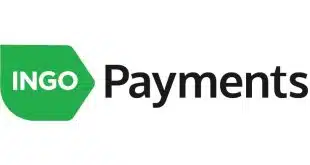With as many as 5 million mobile point-of-sale readers in circulation in the United States, mobile POS companies will have their hands full following the liability shift set for October 2015 when the nation’s payment card networks step up the migration to the Europay-MasterCard-Visa smart card scheme.
Designed to attach to smart phones and tablets to enable mobile payment acceptance, these readers only accept magnetic-stripe transactions, but one day will need to accept chip card payments. Converting the pool of mobile POS readers is nearly as massive an undertaking as converting millions of countertop payment terminals will be.
Already vendors are prepared for the task. Roam Data, a unit of France-based Ingenico S.A., updated one of its mobile readers to accept chip-and-PIN transactions. The device also includes a mag-stripe reader and an optional near-field communication chip. AnywhereCommerce, a Montreal-based engineering firm, also sells chip-compatible mobile POS readers, and updates them regularly.
Even with available product, the challenge is the migration.
“Our bigger resellers are definitely concerned, and more comfortable knowing we have an EMV roadmap,” says Ken Paull, Roam’s chief executive. He’s seen estimates of as many as 5 million of the portable readers in circulation.
Certainly, any security-conscious merchant likely will be among the first to switch to chip-compatible mobile card readers, he says, and that very likely includes the largest of merchants that have the resources. “They’re the ones who will be the early adopters,” Paull says. He also speculates that merchants with countertop payment terminals may switch before those that use mobile POS systems.
At AnywhereCommerce, co-founder and chief executive Mitchell Cobrin says the cost of a chip-compatible mobile card reader may be a factor, too. On the wholesale market, a mobile mag-stripe card reader may sell for between $20 and $30, but the chip version may be close to $100, with the price falling as volume increases, he says. “People who want to give away the device and hope the merchant turns it on, may need a reset in their thinking,” Cobrin says.
Mobile card readers from companies like Square Inc. and PayPal cost users $9.99 and $14.99, respectively, but typically they are rebated these amounts. PayPal has an EMV-compliant mobile card reader that only is available in the United Kingdom and Australia, and sells for 99 pounds ($164.53) in the U.K.
Merchants using mobile card readers can afford to wait until closer to the October 2015 shift, Cobrin says, because the devices tend to have short lifespans and cost less than countertop payment terminals. For example, an MX860 payment terminal from VeriFone Systems Inc. lists for $606.30 on BarcodesInc.com. “There’s not a lot of upside for the smaller merchant to pay three times more than they’re accustomed to paying for a mag-stripe reader,” Cobrin says. “That said, when you look at a large enterprise user, it may be more compelling argument to move to chip. They’re building larger systems with longer lifespans.”
n
At MagTek Inc., a Seal Beach, Calif.-based manufacturer that sells a Bluetooth-enabled mobile card reader that works with chip and mag-stripe cards, chief executive Annmarie “Mimi” D. Hart, suspects that many small-to-mid-size merchants will wait until opting for EMV-capable mobile card readers. “They’re reluctant to change now,” Hart says. That is not unique to smaller merchants, she says. “Merchants are still playing wait-and-see,” she says. When consumers start to carry two to three chips cards in their wallets, that’s when merchants will be more willing to update their payment technology, she says. “In the meantime, there is still not a huge number of a chip cards being introduced for domestic use,” Hart says.
The migration could be challenging, says Gary Yamamura, president of consulting firm Edept LLC. “We have to consider the fact that a few million new merchants, all using mobile devices as their POS terminals, have been introduced [to credit and debit card acceptance] in the just the last year or so, thanks to the efforts of Square, PayPal, and others in the mPOS space,” Yamamura says. “Many of these new merchants have just learned the art of magnetic stripe-card acceptance and will need to have their solution upgraded to support EMV.”
There are other issues to resolve, such as how chip-based debit transactions will be handled. EMV was designed for use with a single debit network, but the Durbin Amendment requires merchants to have at least two unaffiliated network choices for routing a debit card transaction. There is disagreement among debit players how this should be handled.
Yamamura sees little progress on that matter. “The biggest issues are more political than technical,” Yamamura says. “Once the political issues are resolved, it shouldn’t be too difficult to set a path for the technology that will work for all POS devices, including those in the mPOS category.”





